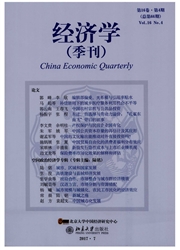

 中文摘要:
中文摘要:
采用我国13个油菜主产区1978-2012年的面板数据,基于超越对数生产函数模型和固定效应估计,对油菜生产各要素投入的产出弹性和要素替代弹性进行估计,探讨油菜生产的增长路径。结果表明,虽然油菜生产经历了一个劳动力净流出的过程,但因为化肥和机械投入对劳动力产生了显著的替代效应,这一过程并未对油菜生产尤其是单产提高产生显著损害,油菜生产也因此采取了一条劳动生产率导向和机械技术主导的增长路径。另外,其他要素投入之间也存在一定要素替代效应。基于此,就优化油菜要素投入结构、应对劳动力转移挑战等提出了若干政策建议。
 英文摘要:
英文摘要:
Based on the input-output panel data from 13 main rapeseed production provinces in China between 1978 and 2012,this paper estimates production elasticity and substitution elasticity of each input of rapeseed production by using the trans-log production function and fixed effect estimation.Then,this paper analyzes the growth path of rapeseeds production.The result shows that even though rapeseed production has experienced a process of rural labor force transfer in China,this process doesn't harm the production of rapeseeds especially the increase of yield significantly because of the substitution effects of chemical fertilizer and machinery to the rural labor,the production of rapeseeds has chosen the labor productivity driven growth path and the agricultural mechanization-dominant growth path.Besides,there are some factor substitution effects among other inputs.Consequently,this paper puts forward several policy suggestions on how to optimize input structure of rapeseeds and respond to the challenges of labor force transfer.
 同期刊论文项目
同期刊论文项目
 同项目期刊论文
同项目期刊论文
 期刊信息
期刊信息
